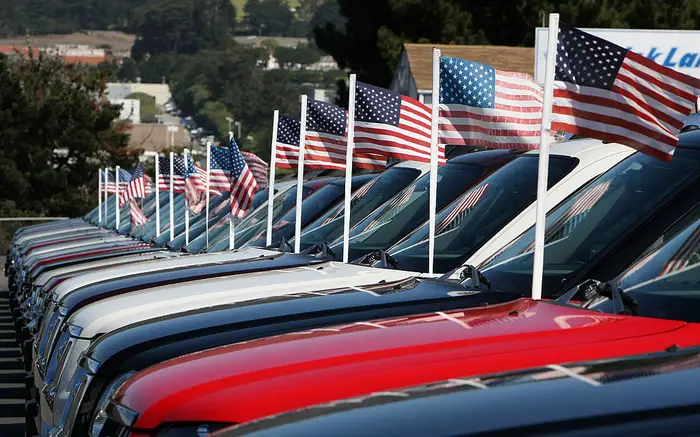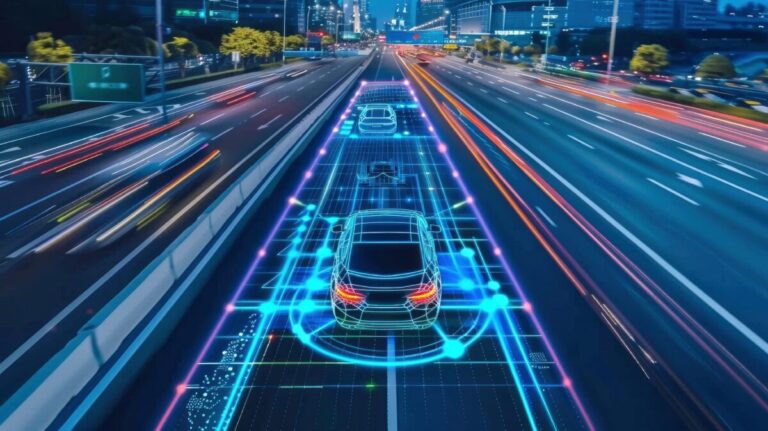
Introduction
The automotive landscape is undergoing a historic shift as traditional internal combustion engines give way to electrified, software-defined vehicles. In a post-pandemic world marked by supply chain recalibrations and evolving consumer expectations, the U.S. automotive and mobility industry is at the nexus of technological innovation and realignment of strategy. From surging EV adoption and intensified price competition to revolutionary changes in digital retailing and supply chain localization, this report examines how industry leaders are navigating these turbulent times. The insights reveal how automakers are balancing profitability from legacy products with aggressive investments in electrification and autonomous technologies, developing strategies for a dynamic future where software and connectivity are as critical as mechanical engineering. This analysis is a call to action for CEOs and boards to reimagine their business models and steer their organizations toward long-term competitive advantage in an era defined by relentless change.
Highlights:
Easing supply chain constraints (especially semiconductor availability) unlocked production, allowing automakers to finally convert order backlogs into sales. U.S. new vehicle sales jumped 12% in 2023 (automotivedive.com), a welcome recovery from the 2020–2022 slump. However, this volume rebound collided with record-high vehicle prices and financing costs: the average new car transaction price hovered around $48,000 (caranddriver.com), and average loan rates exceeded 7% (doubling from 2021), pushing average monthly payments to an all-time-high ~$736 (caredge.com).
Consumers, while eager to replace aging cars, felt the squeeze of $5 gasoline (in mid-2023) and expensive credit – leading many to extend loan terms to 6-7 years or opt for cheaper used cars (used car prices, after skyrocketing in 2021, declined ~10% in 2023 as supply improved). Meanwhile, the electric vehicle (EV) revolution hit an inflection point: EVs surpassed 7.5% of U.S. new light vehicle sales in 2023 (over 1 million units, up ~50% YoY) spglobal.com. The nation crossed the “tipping point” of 5% EV adoption in 2022, and momentum is building thanks to new models and hefty federal incentives from the 2022 IRA law. But incumbents face intensifying competition (and price wars) as Tesla aggressively cut prices by up to 20% (reuters.com) to defend its share, and new entrants (Rivian, Lucid, plus a wave of upcoming Chinese brands) target the U.S. market.
Impact on Automotive Sector:
Profitability and Market Dynamics:
Automakers enjoyed strong revenue in 2023 from higher volumes and pricing power, but margin pressures emerged. The UAW strike in fall 2023 – a targeted strike across the Big Three – secured cumulative 33% wage increases over 4 years for unionized auto workers (reuters.com). dramatically raising labor costs for Detroit automakers. This levels the playing field somewhat for Tesla and foreign transplants (who are non-union) while potentially adding ~$1,000+ in cost per vehicle for the Big Three. Automakers are now balancing between investing in EVs and protecting profitable legacy vehicle sales.
Consumer behavior shifts:
With vehicle prices so high, consumers are holding cars longer (average age of U.S. light vehicles hit a record 12.5 years). Many buyers, priced out of the new market, shifted to certified pre-owned and used cars, keeping used prices historically elevated. There’s also a growing divide in mobility: urban consumers have more alternatives (ride-hailing, micromobility, public transit recovery), while rural/suburban remain car-dependent. Additionally, 2024 saw surging interest in hybrid vehicles – anecdotally, dealers reported increased hybrid sales as a “bridge” for fuel savings without range anxiety, indicating many consumers aren’t ready to go fully electric just yet.
Commercial vehicles and fleets:
The trucking sector softened with freight demand down, but investment in fleet electrification and autonomous trucking continues, anticipating long-term efficiency gains. Companies like UPS and Amazon scaled up orders of electric delivery vans (e.g., Rivian’s EDV) in response to ESG goals and upcoming regulatory mandates (California’s zero-emission commercial vehicle rules).
Technological and Commercial Developments:
Electrification:
Every OEM has bolstered their EV pipeline. This year, consumers are seeing an onslaught of new EV options – from Ford’s electric pickup and GM’s multiple Ultium-based models to Hyundai’s and Kia’s well-reviewed EVs. However, 2023 and 2024 revealed challenges: some automakers had to idle EV production temporarily due to inventory build (demand didn’t keep up with ambitious ramp-ups in certain segments, possibly due to insufficient charging infrastructure or the price sensitivity of EV-curious buyers). Nonetheless, EV sales are expected to continue growing, aided by $7,500 federal tax credits (though eligibility rules on local manufacturing and battery sourcing added complexity).
Battery and Charging Ecosystem:
Massive investments are flowing into battery plants (the U.S. is set to add >250 GWh of annual battery production capacity by 2025) and public charging networks – Tesla opened part of its Supercharger network to other brands under White House initiatives, and competitors like Electrify America and EVgo expanded stations. Yet, reliability of public chargers is an issue that industry is addressing via standards and maintenance commitments.
Software and Autonomous:
2023 and 2024 was mixed for autonomous vehicles – Waymo and Cruise expanded robotaxi operations in cities like San Francisco and Phoenix, logging millions of driverless miles, but also faced high-profile incidents and regulatory scrutiny (California even paused Cruise’s operations after safety incidents). Fully self-driving consumer cars remain elusive, but ADAS (advanced driver assist) features are now mainstream – over 80% of new cars sold offer some form of lane-keeping and adaptive cruise. Over-the-air software updates, pioneered by Tesla, are now being adopted by legacy OEMs, turning cars increasingly into “computers on wheels” with continuous feature upgrades (and new revenue streams like subscriptions for premium features).
Disruptions & Opportunities:
New Entrants and Competition:
The traditional automotive competitive set has exploded. Not only are Tesla and established European/Japanese automakers in the EV race, but tech firms are developing strategy (Apple’s car project is still unofficially alive, and Sony/Honda unveiled an EV prototype). Add to that startups and even state-backed Chinese EV makers aiming at the U.S. – this competition is spurring innovation but will pressure prices and margins long-term in the US automotive industry.
Direct-to-Consumer Sales:
In the US automotive industry, Tesla’s direct sales strategy and the growth of online car retail are pressuring the dealership franchise system. In 2024, more consumers showed willingness to buy vehicles online without a traditional dealer; OEMs like Ford are experimenting with transparent pricing and online ordering for EVs. Dealers are adapting by focusing on service and used car operations for profit as the sales process changes.
Supply Chain Localization:
In the US automotive industry, the push for U.S.-made EV components (to qualify for subsidies) is a re-shoring catalyst. Battery gigafactories across the Midwest and South promise thousands of jobs and a local supply of batteries that reduce reliance on Asia. However, this comes with execution risk – new supply chains need to ramp without hiccups, and raw material sourcing (lithium, nickel) is a strategic concern. Smart automakers are securing upstream stakes in mining and processing ventures.
Mobility Business Models:
Ride-sharing companies returned to growth in 2024 (Uber notched record revenues), and they’re partnering with automakers (e.g., EV fleets for Uber drivers, or autonomous pilot programs with Lyft). Subscription models for cars (monthly payment that includes insurance and maintenance) remain niche but are growing, appealing to younger consumers who value flexibility.
Strategic Imperatives for Auto Industry Leaders:
Drive EV Adoption While Defending Core Segments:
In US automotive industry, the strategy to transition to electric is an imperative, but it must be balanced with today’s profit engines (trucks & SUVs). Imperative: Accelerate EV development and ecosystem support – ensure a robust rollout of models in segments with the highest EV potential (small SUVs, sedans for fleet). Partner to alleviate consumer pain points: for instance, co-invest with charging providers to ensure reliable coverage in key markets, and provide home charger installation services with vehicle purchase to ease the switch. At the same time, don’t neglect ICE (internal combustion engine) customers – continue to improve fuel efficiency and features in gasoline models that will be sold for the next 10-15 years.
A dual strategy might entail offering hybrid variants as standard on popular models to bridge consumers into electrification. Use profits from trucks/SUVs (which benefited from high pricing power in recent years) to fund the EV expansion. This year onwards, aim to reach cost parity (or close) between your EV and ICE offerings in the same segment – that is the tipping point for mass adoption.
Adopt a Software-First Mindset:
As cars become defined by software (from infotainment to autonomous capabilities), automakers must evolve into tech companies.
Action: Reorganize R&D and talent to prioritize software development and electronics. This could mean opening a Silicon Valley or Austin software hub to attract top developers, acquiring software firms (in areas like AI, UI/UX design, cybersecurity for vehicles), and implementing agile development processes unfamiliar to traditional automotive timelines.
Strategic goal: In the US automotive industry, the vital strategy is to develop a proprietary software platform that spans all your vehicles – akin to an operating system – enabling over-the-air updates and new feature deployment. This platform approach can reduce complexity (no more completely different electronic architectures for each model) and create new revenue streams (like subscription features: GM, for example, plans for software/services to add $20B revenue by 2030). Additionally, invest in digital twins and simulation: virtually testing features (especially for autonomy/ADAS) to iterate faster. Culturally, management must champion the slogan “no longer just metal bending – we’re coding the future of mobility” to shift mindset at all levels.
Build an Agile and Resilient Supply Chain:
The past years taught painful lessons about fragility (chips, shipping, commodities). Imperative: diversify and localize critical supply chains. Identify the top 10 components by revenue risk (e.g., chips, battery cells, power electronics) and ensure dual sourcing for each – ideally one of those sources domestic.
Actionable step: In the US automotive industry, the fundamental strategy is to sign long-term contracts or joint ventures for battery materials (lithium, cobalt) to secure supply and control costs; several automakers are already doing this, so move decisively. Embrace vertical integration selectively: Tesla’s success partly comes from building many components in-house – decide which key elements (motors, battery pack integration, advanced chips) you should produce internally to avoid dependency.
Also, maintain strategic buffer inventory for parts with volatile supply (not old-school bloated inventory, but enough safety stock or flexible contracts to weather short disruptions). Use advanced analytics to predict supply disruptions (monitor geopolitical events, supplier financial health, etc.). Logistically, revisit your production footprint: having mega-factories building one model might be efficient, but regionalized production can be more resilient. For example, allocate EV production to at least two different plants in different regions to mitigate local issues and be closer to demand (cutting shipping delays/costs).
Reimagine the Retail Experience and After-Sales:
Car buyers, especially younger ones, expect a buying experience more akin to buying an iPhone than the haggling of the past. Action: work with dealer networks to evolve the sales model. Introduce transparent, no-haggle pricing nationwide (some brands have started this for EVs). Enable online end-to-end purchasing – those who want to buy/lease a car from their couch should be able to do so, with the dealership mainly as a delivery and service center.
Train dealerships to shift focus from hard selling to being brand experience centers and service hubs. Incentivize dealers on customer satisfaction and volume rather than gross margin per vehicle. Additionally, bolster your after-sales business (which is a profit lifeline): with EVs having lower maintenance needs, consider new offerings like mobile service (technicians that come to the customer’s home) and expanding into related services (charging installation, energy storage solutions). Explore bundling insurance or software subscriptions at point of sale – making the company a one-stop shop for the vehicle lifecycle. The goal is an ownership experience so smooth and supported that it builds lifetime loyalty (and perhaps offsets that EVs will visit service centers less often).
Lead in Sustainability and Policy Shaping:
The industry is under pressure to decarbonize, but this can be turned into a competitive advantage. Imperative: not only comply with environmental regulations but get ahead of them. Commit to clear sustainability targets – e.g., a fully carbon-neutral supply chain by 2040, and use a high percentage of recycled materials. This isn’t just good PR: it prepares you for likely future regulations and appeals to ESG-focused investors and customers. Work actively with policymakers – the auto industry has an opportunity to shape how IRA incentives, emissions standards, and autonomous vehicle regulations unfold. Be at the table: for instance, ensure that proposed EV charging standards are compatible with your tech or that autonomous vehicle safety rules are practical and based on real-world testing.
By constructively engaging (perhaps through consortiums with other automakers), you can avoid adverse rules and even help design frameworks that favor companies who are most prepared (like yourselves). Additionally, highlight job creation and American manufacturing in your strategy, aligning with political priorities – this can build goodwill and consumer support (buying “American-made EVs” becomes a patriotic angle as well).
CEOs and boards in the automotive world must recognize that this isn’t simply a cyclical recovery – it’s a pivot from the internal combustion era to an electrified, digitized future of mobility. The winners of tomorrow are being decided today by how boldly and smartly companies act.
Call to action:
Make 2025 a milestone year for your company’s transformation. Set audacious goals – for example, “50% of our sales will be electric or hybrid in 2027,” or “we will generate $x billion from software and services by 2028.” Then mobilize the organization with the investments, partnerships (with tech firms, battery makers, charging networks), and talent to achieve them.
In board discussions, push management not just on quarterly results, but on innovation velocity and strategic milestones (Is our EV platform scalable and cost-competitive? Are we collecting and leveraging data from our connected cars effectively?). The road ahead has risks – from economic swings to new competitors – but also tremendous opportunity for those who dare to drive the change. The automotive leaders who combine engineering excellence with digital savvy and customer-centricity will steer their companies into an era of growth and relevance that outpaces the pack.
This report’s analysis and strategic insights are powered by Nexstrat.ai. To see Nexstrat.ai in action and learn how it can enhance your strategy development and decision-making, schedule a demo at nexstrat.ai/book-a-demo.
About NexStrat AI:
NexStrat AI is at the forefront of AI and business strategy innovation. As the ultimate strategy and transformation AI co-pilot and platform, we help leaders and strategists craft winning strategies and make effective decisions with speed and confidence.
Contact Us:
Have questions or want to learn more? Contact us at [email protected]
Follow Us:
Join our community of forward-thinking business leaders on LinkedIn.


